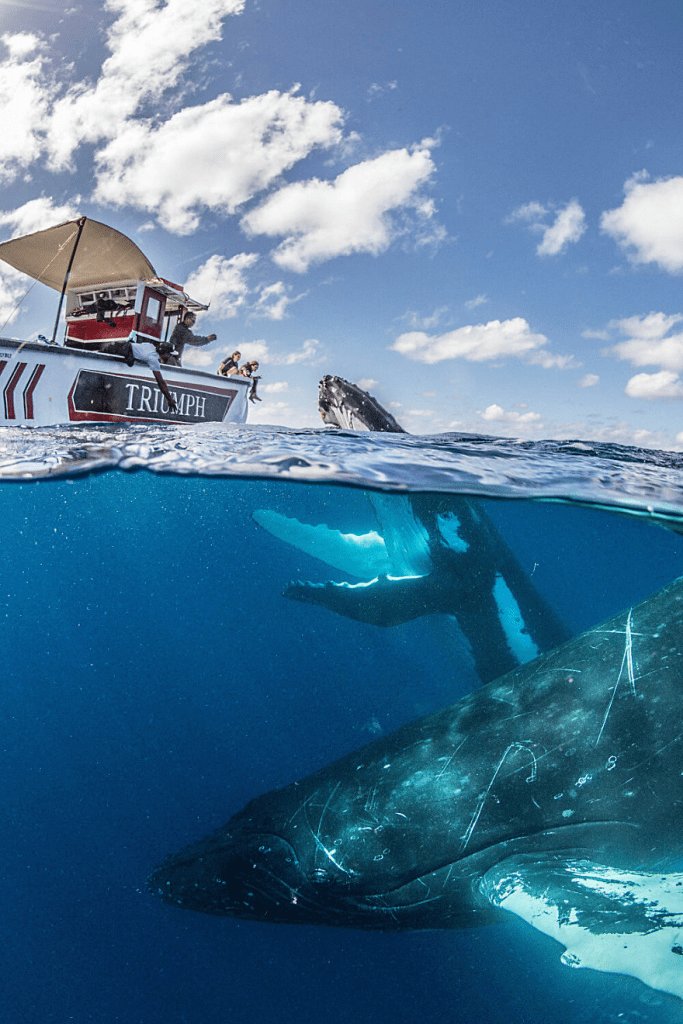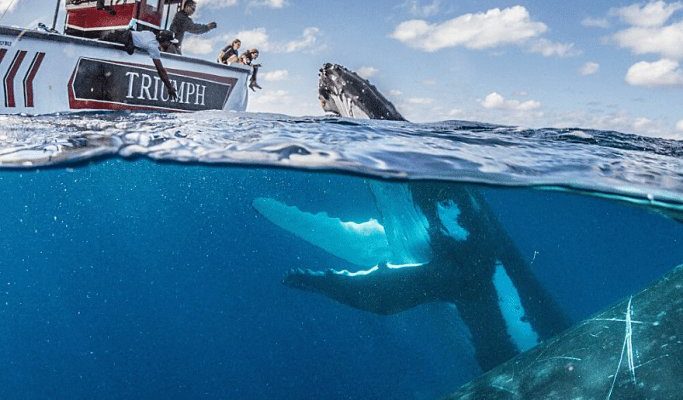
Let’s unpack this idea a bit. The ocean is their home, and respect is crucial when entering it. Just like you wouldn’t want someone barging into your house uninvited, whales have their own set of rules and boundaries. So, can we safely engage with them? And if so, how do we do it without causing harm to ourselves or the whales? Let me explain the factors involved, from how to approach these creatures to the importance of conservation efforts.
Understanding Humpback Whale Behavior
Humpback whales are known for their playful and curious nature. They often breach the water’s surface, performing acrobatic flips that can take your breath away. But what might look like a carefree attitude is actually a complex behavioral repertoire. These whales communicate using songs, which can travel long distances underwater, and they display social behaviors when interacting with each other.
You might be wondering why understanding their behavior is so important for safe interactions. Well, recognizing their moods and signals can help you predict how they might respond to human presence. For instance, if a humpback starts to swim away or dives deep, that’s a clear sign they want some space. Just like people, whales appreciate privacy, especially when they’re nursing their young or resting.
Moreover, humpback whales are migratory creatures, traveling thousands of miles between feeding and breeding grounds. This long journey affects their behavior, particularly during specific seasons. During migration, they might be less inclined to engage with human activity. Understanding these patterns will help you figure out when and how to interact with them safely.
Best Practices for Whale Watching
If you’re excited at the thought of spotting humpback whales, you’re not alone! Millions of eco-tourists participate in whale watching each year. However, there are important guidelines to follow to ensure these interactions are respectful and safe for both humans and whales.
First and foremost, always choose responsible whale watching tours. These operators are trained in safe practices and often follow strict regulations designed to prevent harassment of marine life. They maintain a respectful distance, typically around 100 yards, which is crucial for minimizing stress on the whales.
Additionally, avoid making loud noises or sudden movements while on the boat. This can startle the whales and disrupt their natural behaviors. Instead, quietly observe and take in the experience. After all, it’s not just about seeing them; it’s about understanding and appreciating these incredible creatures in their natural habitat.
Lastly, familiarize yourself with local regulations regarding whale watching. Different areas may have specific laws to protect whales and their environment, and following these rules helps ensure that future generations get to enjoy these beautiful creatures, too.
The Importance of Conservation
Conservation plays a critical role in ensuring that our beloved humpback whales thrive. Once on the brink of extinction due to whaling, they’ve made a remarkable recovery thanks to various conservation efforts. But they still face significant threats today, like climate change, ocean pollution, and entanglement in fishing gear.
Honestly, you might feel a bit overwhelmed when thinking about these issues, but there are ways you can help. Supporting organizations dedicated to marine conservation is a fantastic start. These groups work tirelessly to protect whale habitats and educate the public about sustainable practices. You can also make conscious choices, like reducing plastic use and advocating for cleaner oceans. Every little effort counts!
Additionally, participating in beach clean-ups or awareness campaigns fosters a community spirit around ocean conservation. When we come together to protect the environment, we not only support the whales but also help preserve the entire marine ecosystem.
What to Do If You See a Stranded Whale
Encounters with humpback whales don’t always happen under the best circumstances. Sometimes, these majestic creatures may find themselves stranded or beached, and knowing how to react in these situations is paramount.
If you come across a stranded whale, the first step is to keep calm and assess the situation. Call local wildlife authorities immediately—these professionals are trained to handle such situations. It’s important not to attempt to push the whale back into the water yourself. This can cause more harm than good, and without the right tools and training, you could put yourself in danger.
While waiting for help to arrive, you can do a few things to assist. Cover the whale with wet towels or clothing to keep its skin moist, and make sure to keep the area around it clear of people and boats. This reduces stress for the whale and allows trained responders to do their job more effectively.
Remember, every minute counts in these situations. The sooner the experts can get involved, the better the chances of saving the whale. Your role is to ensure that the whale remains as comfortable as possible until help arrives.
Challenges of Safe Interaction
While the dream of swimming or watching humpback whales up close is enticing, there are notable challenges that come with these interactions. Safety isn’t just about protecting ourselves; it also includes being mindful of the whales’ well-being.
One major challenge is the risk of disease transmission. Just like humans, whales can carry diseases that may not affect them but can be harmful to human beings. On the flip side, humans can unknowingly transmit pathogens to whales. This is why keeping a respectful distance is so crucial. You wouldn’t want to put these beautiful creatures at risk while trying to admire them.
Another challenge is environmental impact. Boating near whale habitats can disrupt their feeding and breeding behaviors. The noise from motorboats can interfere with their communication and even lead to disorientation. That’s why it’s vital that any interactions are conducted carefully and responsibly.
Finally, there’s the issue of human-wildlife conflict. As more people seek out wildlife experiences, the potential for negative interactions increases. Wildlife watching should always be done with an awareness of the consequences of our actions, ensuring that our adventures exist within a framework that prioritizes conservation.
Engaging with humpback whales is a thrilling prospect, but it carries responsibilities and challenges. By understanding their behavior, following best practices during whale watching, and advocating for conservation, we can create a beautiful relationship with these magnificent creatures.
So, whether you’re planning your first whale watching trip or just dreaming of it, keep these principles in mind. After all, these gentle giants are a part of our ocean family, and it’s our duty to protect their world just as they enchant ours. With a little bit of knowledge and respect, we can ensure that our interactions with humpback whales are not only safe but also enriching for both sides.

